Dogs perform a wide variety of services for their humans.
Some perform amazing feats of agility to entertain us, while others assist handicapped people, help those who struggle with anxiety and depression, or offer support to children with special needs.
Others use their incredible sense of smell to find hidden items or monitor blood sugar levels!
But the ones that we’re talking about today hold a special place in my heart – today, we are going to talk about guard dogs.
These dogs have an unrivaled love for their humans, and they are willing to do just about anything to keep their people and home safe.
7 Best Guard Dog Breeds: Top Dogs For Protection
Even dogs of unknown ancestry may perform admirably in a protective context, but if you want a dog that will instinctually protect your family, you should consider the following breeds at the outset. They’ve proven over time that they’re willing and able to guard that which you hold dear.
It’s worth pointing out that the first three breeds on our list – German shepherds, Rottweilers and Doberman pinchers — probably combine to represent the bulk of the guard dog niche.
This is not exactly surprising; after all, these breeds are the 2nd, 9th and 14th most popular in US homes. Additionally, they all three exhibit the traits you’d want in a good guard dog.
There is no guarantee that any dog will act in a protective manner unless he or she has been explicitly and professionally trained to do so. While the following breeds typically exhibit the traits that are important for a good guard dog, wise owners will obtain professional evaluation and counsel before relying on their dog for protection of any sort.
1. Rottweiler

Originally developed to herd cattle and accompany soldiers into battle, Rottweilers check off every box on the guard dog checklist: They are one of the most intelligent breeds in the world, they love their families in a way that is truly difficult to convey and they are ready to face down any threat – be it a bear, nefarious human or vacuum cleaner – without a moment’s hesitation. And most are ready to back up their bluster if need be.
Rotties are not ideal for inexperienced dog owners, as they require a calm, confident “alpha.” While intellectually independent, they’re emotionally dependent and quite sensitive to their owner’s emotions. Rotties require very high levels of both attention and exercise, so they are not well suited for spending lots of time alone.
Rottweilers are on the shorter side by guard dog standards, but their physical power is both impressive and immediately obvious.
2. German Shepherd

German shepherds have been used by military and police organizations for decades. They exemplify most of the traits found in good guard dogs, as they’re intelligent, loving and brave.
Shepherds are also physically imposing, despite their modest body weight (relatively few shepherds exceed 100 pounds).
In part, this is due to their long, fluffy coat, which exaggerates their size, but they also have very broad, deep chests and a set of ears large enough to pick up basic cable.
German shepherds, like most other affectionate, sensitive breeds, require plenty of time with and attention from their people, otherwise they can develop behavioral problems. You’ll also have to spend a lot of time grooming your shepherd and cleaning up the ridiculous amounts of hair they shed.
3. Doberman Pinscher

Originally bred to accompany tax collectors, Dobermans excel in most protection-oriented applications. Dobermans are very loving, sensitive dogs, who also possess the bravery, size and imposing appearance to make them one of the very best guard dogs available.
Dobermans are in the same size class with Rotties and shepherds, but they make the most of their size with their tall build and pointed ears. Dobermans are a bit lighter on their feet than these other breeds, and they probably require a little more space and exercise too.
At the risk of sounding like a broken record, Dobermans – like shepherds and Rotties – are sensitive, loving, loyal, intelligent and brave dogs who are instinctively compelled to protect their homes and families.
4. Bullmastiffs

Originally conceived to deter poachers, bullmastiffs have provided protective services to their humans since their inception.
Bullmastiffs exhibit most of the same traits the “big 3” do: They’re loving, affectionate and unquestionably protective. However, they aren’t as clingy as these other breeds often are, and they require less exercise too.
Bullmastiffs are very large, powerful dogs, who often exceed 110 pounds in weight. Given the combination of their size and independent nature, they are a poor choice for first-time owners. Additionally, while these are perfectly lovable, handsome dogs, they tend to drool a lot and produce copious quantities of gas, which slightly offsets their otherwise-significant appeal.
5. Giant Schnauzer

Giant schnauzers are sensitive, but lack the intensity of some of the other good guarding breeds. These dogs are affectionate and loving with their families, needing plenty of attention from their humans to remain happy.
Giant Schnauzers are proud, territorial dogs, whose size helps make up for their refined appearance. They are actually quite powerful dogs, capable of effectively defending their family.
Schnauzers are somewhat mischievous and very intelligent, so while they can be a joy for experienced dog owners, they are not ideal for beginners.
6. Great Pyrenees

While they are not a prototypical breed for personal or family protection, Great Pyrenees are well-suited for a number of protective contexts. They were developed to protect livestock from coyotes and wolves, and nearly everything about their personality and appearance points to this history.
Great Pyrenees are independent, loyal and brave dogs, with an apparent size that will intimidate just about anything short of a polar bear. They’re loving and gentle with their flock (be it comprised of humans or sheep), but their aloof nature can make them challenging for first-time dog owners.
Great Pyrenees may not have the sensitivity and need for human interaction that some other dogs do, but they are generally sweet and loving, if somewhat aloof.
7. Great Dane

Great Danes are massive, sensitive and gentle beasts, who bond strongly with their humans.
They are not especially territorial, defensive or protective, but they are ready to act in order to protect the safety of their family. While most are “only” in the 100- to 150-pound range, exceptionally large Danes reach 200 pounds.
While loving and reasonably well-suited for guard work, Great Danes are not a good choice for beginners, given their combination of size and intelligence. However, for those with the time, love and experience necessary, Great Danes are remarkable dogs, who provide protection via their appearance alone.
8. Belgian Malinois
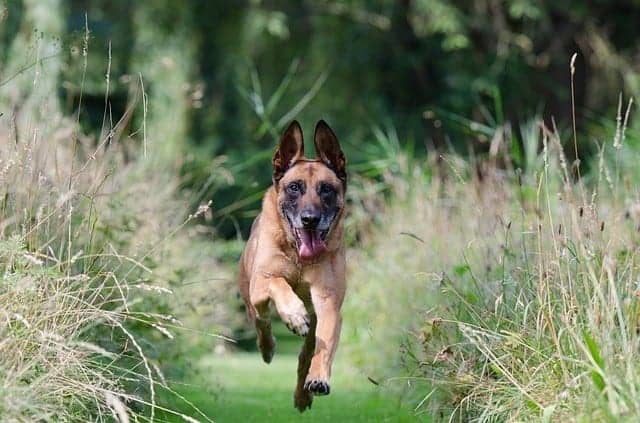
The Belgian Malinois is likely the favorite breed of professional protection dog trainers, and they’re likely the most common breed working for police and military units in the US.
Belgian Malinois superficially resemble small German shepherds, but these dogs have even more intensity and energy than their more common counterparts do. But while this makes them very well-suited for full-time work, it can make them a bit of a handful for typical families.
These are not great dogs for couch potatoes, nor are they suitable for families who spend lots of time away from the home.
But when matched with a good owner or family, Belgian Malinois make loving, loyal and capable companions. And because they rarely exceed 80 pounds or so in weight, they’re a bit easier to house and feed than some of the other breeds commonly used for guarding work.
9. Dutch Shepherd
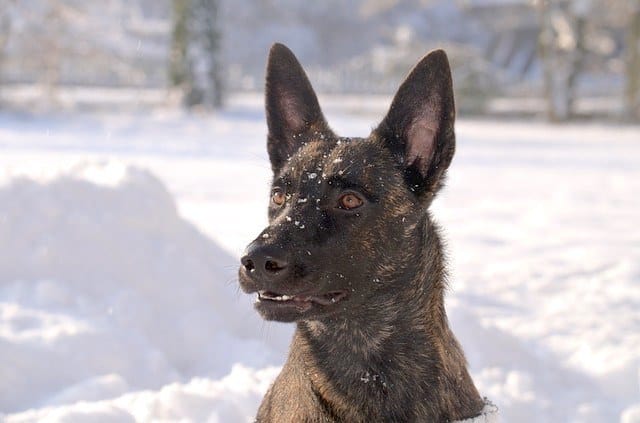
Dutch shepherds have a lot in common with their Belgian and German cousins, but they’re often regarded as being easier to train. They’re a bit rare by shepherd standards, which is a shame, as they often suffer from fewer health-related problems than the others.
Standing around 2 feet high at the shoulder and reaching only 75 pounds or so, Dutch shepherds are smaller than most German shepherds. But while they may be a bit on the small side, they have all of the intelligence, strength, and courage needed for guard-dog or protection work. They’re also well-suited for working in a variety of climates.
Dutch shepherds can be a bit suspicious of strangers, so early training and socialization are imperative for owners. Fortunately, most Dutch shepherds take well to training and enjoy practicing with their owner.
10. Cane Corso
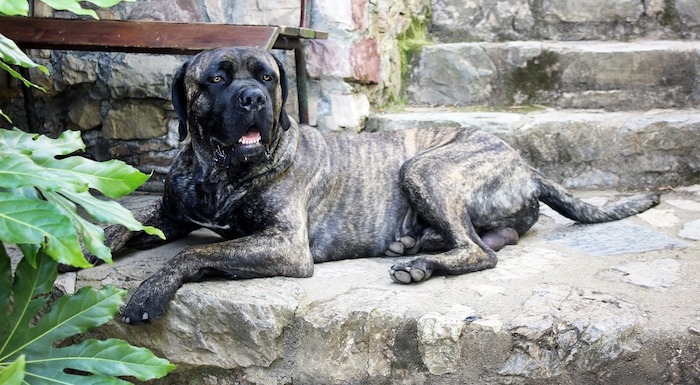
Although their owners typically know just how sweet and lovable cane corsi (that’s the plural of this breed) s are, few people would care to stand toe-to-toe with one of these giant canines. These dogs have an incredibly intimidating appearance, and they exude a calm confidence that is impressive to behold.
Cane corsi are big dogs, who typically weigh around 100 pounds or so, but some reach even larger sizes. They also stand up to 27 inches at the shoulder and have large, impressive heads, which combine to dissuade many would-be threats based on appearance alone.
Cane corsi are not a good choice for novice owners or families who lack the time to provide as much exercise as these energetic dogs need. And unlike some other large breeds who can adapt to apartment life, cane corsi need a big home and fenced yard.
Be sure to feed your cane corso one of the best foods!
11. American Bulldog
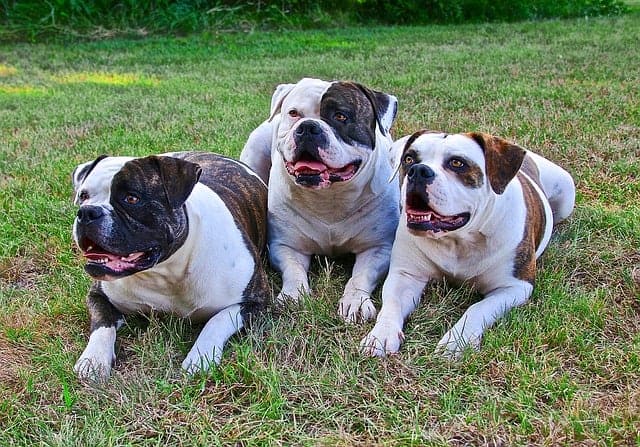
The American Bulldog is a sensitive and affectionate breed who is typically fiercely protective of his family.
Originally developed to help control cattle, these dogs are as brave as they are energetic, and they really require a regular job (even if it is simply patrolling the neighborhood with you on your daily jog) to remain happy and well behaved.
American bulldogs vary quite a bit – they come in several different “styles” and combinations thereof, and they vary greatly in size. Small individuals hover around the 50-pound mark, but big boys and girls may exceed 120 pounds. Most are around 2 feet tall, but some stand 28 inches at the shoulder.
American bulldogs are not the most intelligent breed in the world, but they are usually pretty easy to train. They do need a ton of stimulation and training, so they aren’t a good choice for owners who don’t want to dedicate plenty of time and attention to their pup.
Need a great food for your American bulldog?
12. Boxer
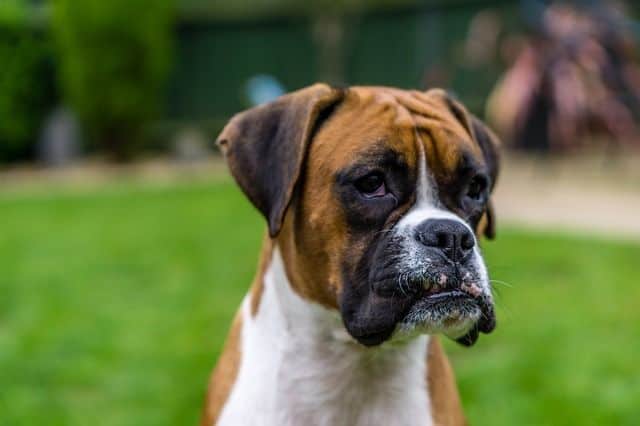
If you’ve ever seen a happy boxer greeting friends and family, it’s hard to imagine that such a pile of wiggly joy could be an effective guard dog. However, that is exactly what these dogs were originally bred to do.
Boxers are a bit on the small side by guard-dog standards, as few weigh more than 75 pounds or so. However, their impressive physiques and energy levels help to make them quite intimidating when they deem such a posture necessary. They’re also smart, easy to train and loyal, so they really are well-suited for guard dog work.
Boxers have a well-deserved reputation for being fantastic with children, and many families find that they make great pets – whether they’re expected to guard the home and family or simply provide love and companionship.
13. Bouvier des Flanders
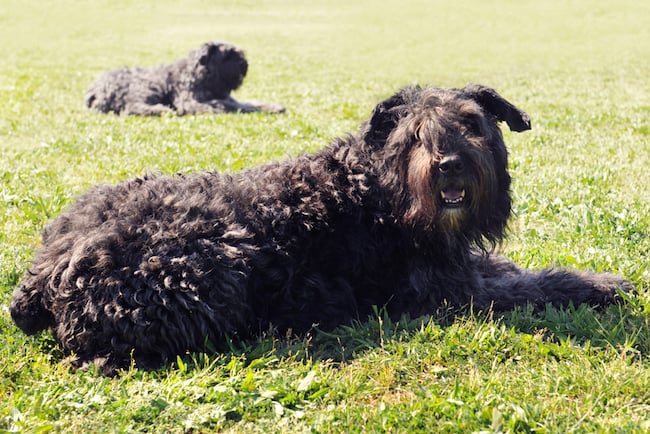
The one-of-a-kind-looking Bouvier des Flanders was originally developed as a herding dog, but they make fantastic watch dogs too. Covered in a fluffy, wiry coat and more facial hair than a lumberjack, the Bouvier des Flanders is also blessed with a thick, muscular build that helps them back down would-be foes.
Often considered one of the finest working breeds in the world, these dogs need an experienced owner with a strong, yet loving and fair, approach. They excel at just about every task you could want, and they’re just as comfortable in the show ring as they are working livestock in the fields.
The Bouvier des Flanders is a very loving family dog, who is generally very gentle with children. However, they are a bit suspicious of strangers and require early socialization and obedience training.
14. Beauceron
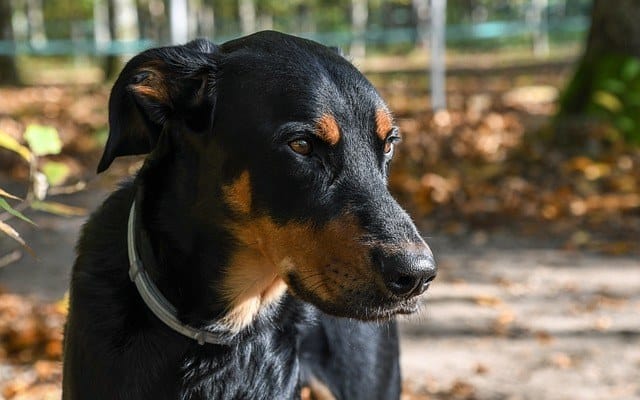
A guarding and herding breed originating in France, the Beauceron is an 80- to 100-pound dog who looks a bit like a three-way cross between a lab, Doberman, and Rottweiler. Like these breeds, the Beauceron is intelligent, affectionate and loyal, although they keep strangers at a greater distance than most labs do.
But while these dogs have plenty of great traits, they’re notable for being quite stubborn. This, combined with their inexhaustible energy reservoirs, can make them difficult to train – particularly for novice dog owners. Beaucerons also have strong prey drives, so caution is warranted around smaller pets.
Most Beaucerons will make fantastic watchdogs without much training at all, but they’ll require a patient and dedicated owner if they’re expected to perform higher levels of guarding or protection work.
As mentioned before, these are not the only breeds that can excel in a protective context. There are plenty of mixed-breed dogs who perform well in these contexts, as well as other pure-bred dogs, whose individual personality lends themselves to these kinds of tasks.
As always, dogs are individuals, who exhibit varying aptitudes and abilities.
Do You Really Need a Guard Dog? Or Will Any Dog Do?

A dog that is intentionally bred and trained for protection is quite different from your average family dog.
A reliable, trustworthy dog trained in protection requires a very experience and skilled trainer.
It’s essential you do plenty of due diligence if you’re planning on purchasing a dog trained in protection, as there are plenty of amateurs out there who will say their dogs are “trained in protection” simply to ask for a higher price.
Poorly trained or poorly bred protection dogs are incredibly dangerous. A large dog who has been encouraged to bite without proper guidance or training is huge liability.
The truth is that the vast majority of owners probably don’t need or want a dog that’s truly trained in protection. If you’re just looking for a theft deterrent, nearly any dog will do.
For example, most dogs – whether 5-pound Chihuahua or 150-pound mastiff – will bark when a stranger knocks on the door. And this is likely more than enough to frighten off opportunistic criminals or teenagers who are up to no good.
If you’re looking for something a bit more intimidating, any of the dog breeds listed above will deter a determined criminal with malicious intent – even if they aren’t a trained protection dog.
Guard Dog vs. Watch Dog: What’s the Difference?
Just for quick reference, here are some of the leading terms used to describe dogs involved in different types of guarding or protection work.
Note that the breed is not what distinguishes the label applied to the dog – the training regimen provided to the dog is the important thing.
- Watch dogs keep an eye out and bark when strangers approach or anything unusual happens – it’ll be your job to deal with the problem. Many dogs naturally behave this way, so advanced training is rarely necessary for these pups. And because they aren’t expected to get physical with a perceived threat, they needn’t be large. Chihuahuas, for example, can often make great watchdogs.
- Guard dogs also keep an eye out for danger, but they’re ready to get physical and defend their home or family from threats. Typically, this means they’ll start by barking at the perceived threat, but they will bite if necessary. Guard dogs must, therefore, receive specific training to excel in such roles. Guard dogs are typically expected to guard a confined area, such as your home.
- Sentry dogs are akin to guard dogs, except that they’re also trained to patrol a given area, such as a large yard or property. Because they’ll be required to work with less human direction, such dogs must be very confident, self-reliant and intelligent.
- Personal protection dogs are like guard dogs who are tasked with protecting a moving target – typically a person or family. These dogs must receive a ton of specialized training, as they’ll need to learn to distinguish between friends and foes and work safely in crowded situations. Most dogs that excel in this role bond very strongly with their people.
- Attack dogs are typically only used by police or military outfits. They are not only trained to perform all of the skills the previously mentioned dogs are, they receive additional training to unleash their potential as an offensive weapon too. Such dogs can be extremely dangerous in improper hands.

While most dogs can provide watchdog-like protective services that involve alerting you to intruders, only a handful are reliably willing to provide more advanced levels of protection that involve biting or attacking a stranger.
Guard Dogs and Families: Are They Safe to Mix Together?
It is always important to deliberately consider the implications of adding any dog to your life, but would-be owners that have families must consider these issues even more carefully. This is especially true of those seeking large breeds, such as those often used as guard dogs.
Large dogs of any type can easily injure small children — even perfectly playful pups can inadvertently hurt kids while goofing around. Dogs that are deliberately bred to be as robust, as most good guarding breeds are, can be even more capable of inadvertently hurting your youngin’s.
However, while it is important that you ensure any dog you introduce to your family is provided with plenty of love, affection, proper training and socialization, most guard dog breeds are naturally loyal and loving with their families.
Despite assigning your guard dog the job of protecting your home, balanced dogs from properly selected bloodlines are likely to become beloved family members, who treat your children with kid gloves.
Just be sure that you teach your children the proper ways of interacting with the dog (no teasing, no rough-housing), and that you supervise all interactions until you are convinced that all of the kids – both two-legged and four – know the rules for playing nicely.
Qualities to Look for in a Good Guard Dog
It’s important to understand that the breeds listed above typically make good guard dogs because they exhibit the traits you’d expect from a dog tasked with watching over their humans.
Some of the most important qualities a good guard dog can possess include:
- Intelligence – Good guard dogs must be obedient and respond to at least the most basic of commands, such as sit, lay down, stay and heel. Additionally, canine intelligence helps your dog distinguish between threatening and merely unusual stimuli.
- Loyalty – To ensure that your guard dog won’t turn into a welcome committee, you’ll need him to be exceptionally loyal. His allegiance to your family must be clear.
- Courage – Your dog must be brave enough to face any danger that presents itself. Consider that your garden variety criminal is probably about twice the size of even a 100-pound Doberman or shepherd – only a brave dog will be willing to stand up to such threats.
- Territorial Instincts – Dogs that strongly identify with their home and are willing to guard it from intruders are obviously better suited for guard work than those who do not mind trespassers.
- Affectionate Nature – All good guard dogs are fearless in the face of danger, but the best guard dogs melt into a wiggly pile of face-licking love when they are with their humans or trusted friends. You want a dog that loves when it is time to love, and protects when it’s time to protect.
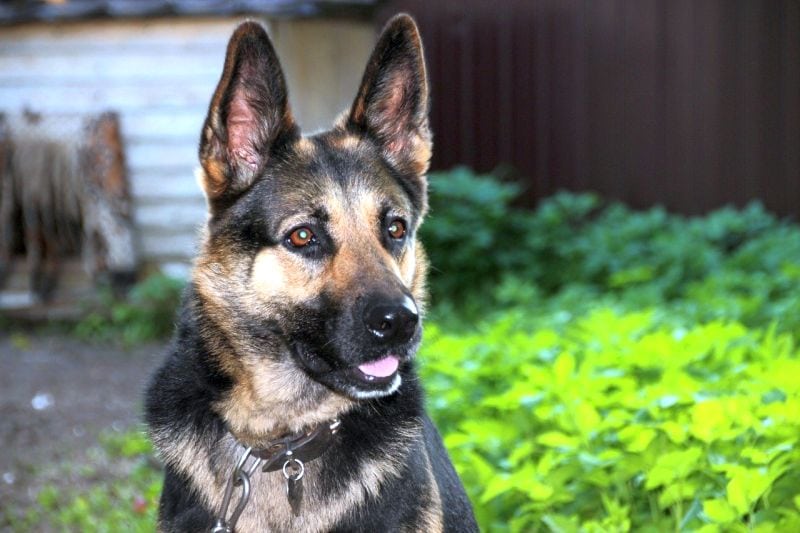
Most Popular Guard Dogs in Various U.S. States
To the best of our knowledge, there isn’t any hard data available regarding which guard dog breeds are most common in different states. However, Your Local Security has tried to provide some information about this question by utilizing Google search trends data for each state (just click that link to learn more about their methodology).
Check out the results of their analysis in the infographic below!
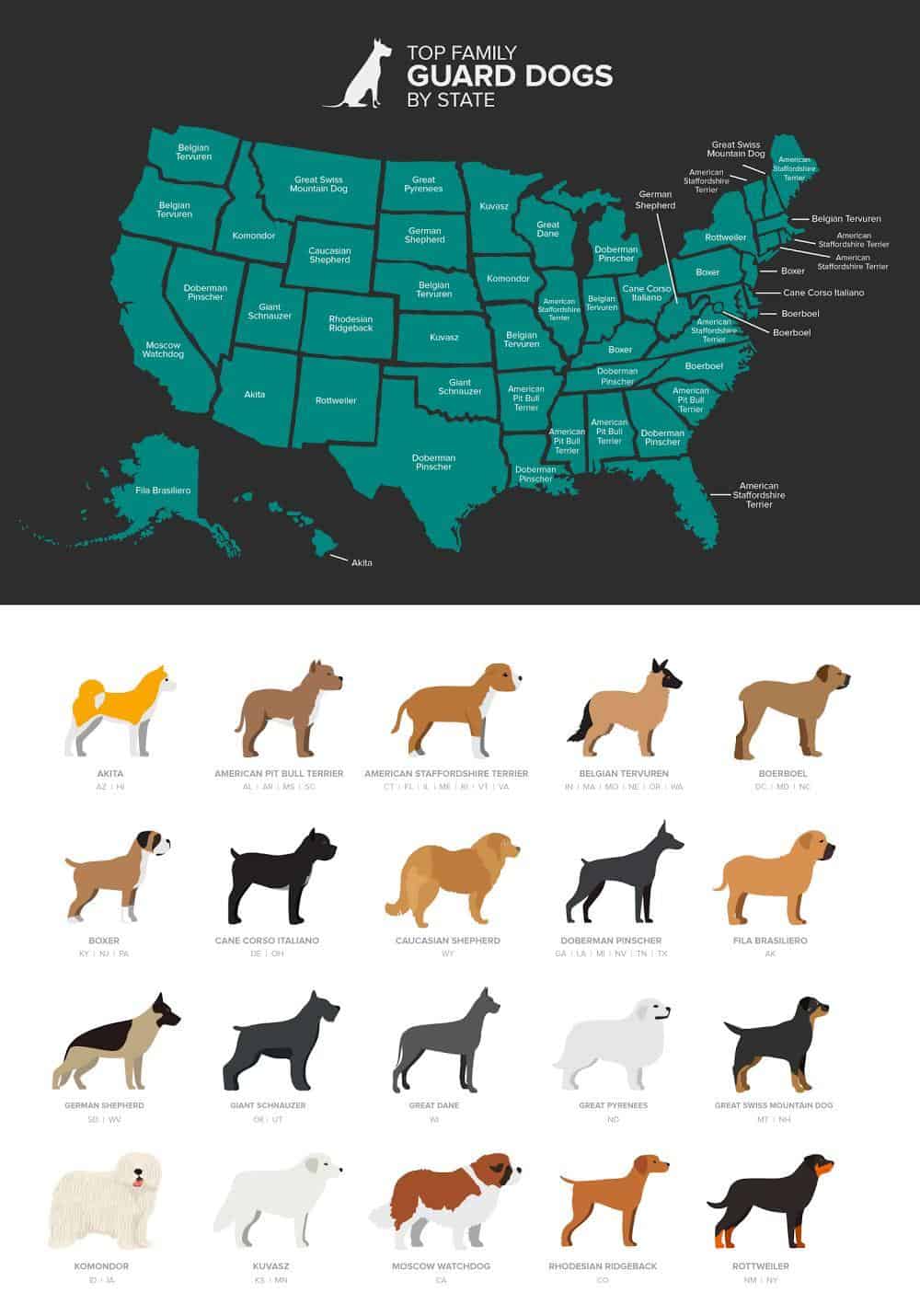
FAQ About Protection Dogs
What is the #1 guard dog in the world?
There is no hard data available, but the Belgian Malinois is generally the most popular guard and protection dog in the world.
Will my dog protect me from an intruder?
Most dogs will cause some kind of commotion if an intruder breaks in, with plenty of barking and possibly some growling. However, not all dogs will get physical. Most family dogs have not been bred to react with physical violence to fear, as that can make them more difficult to manage around humans.
Which dogs make the worst guard dogs?
Generally, dogs that are known for being especially friendly, like Labrador Retriever, Golden Retrievers, and King Charles Cavalier Spaniels, make the worst guard dogs.
***
Do you rely on a dog to help protect your family? My Rottie seems to fit the bill and then some, but I’d love to hear how your Dobbie, shepherd or magnificent mutt helps keep you safe. Share your stories with us in the comments below.
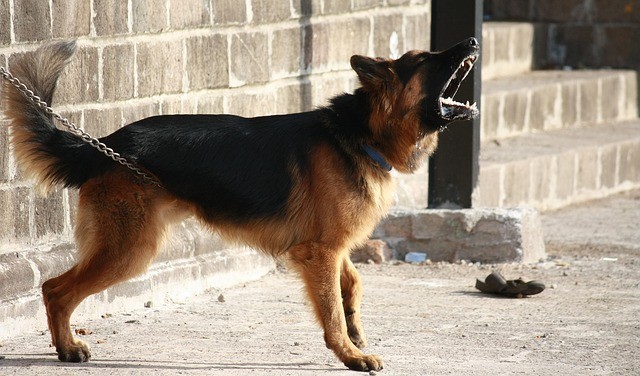
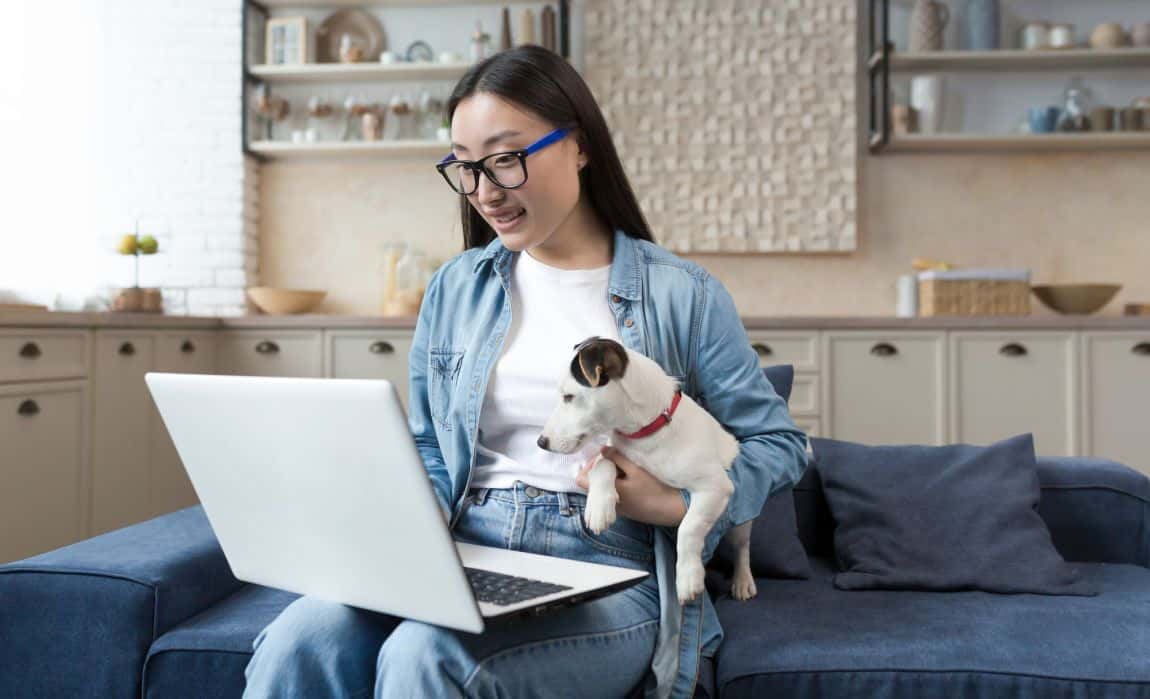


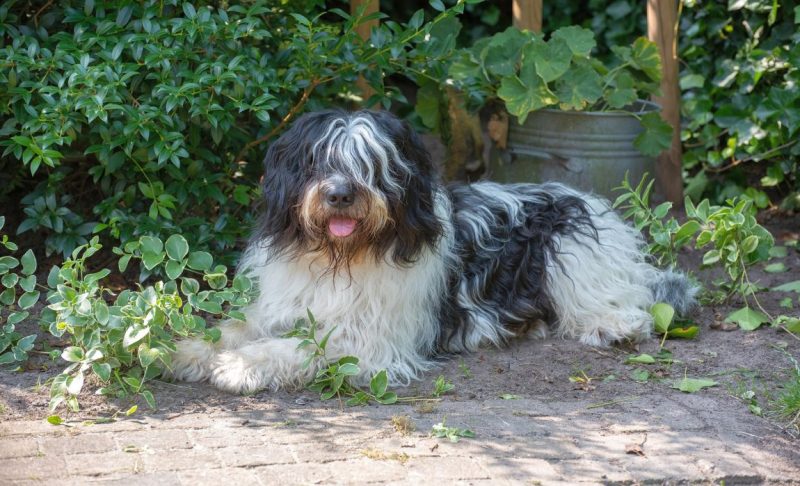
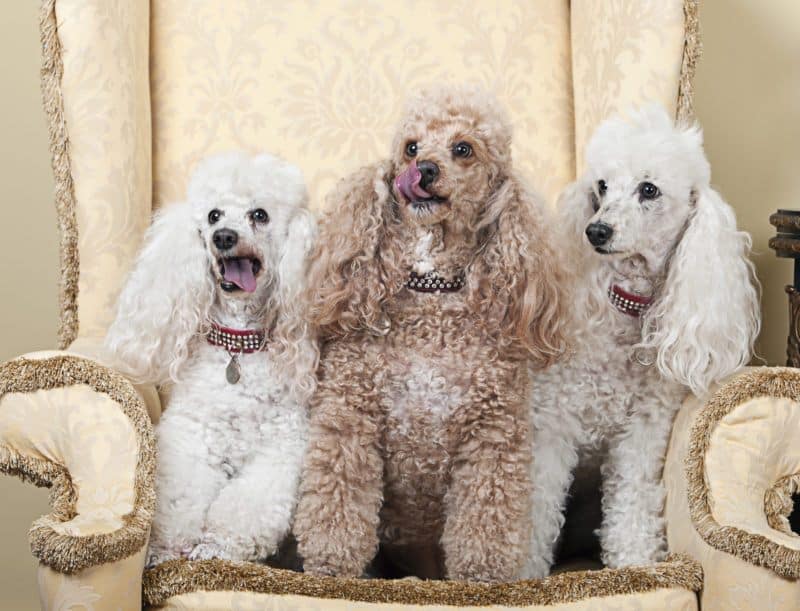
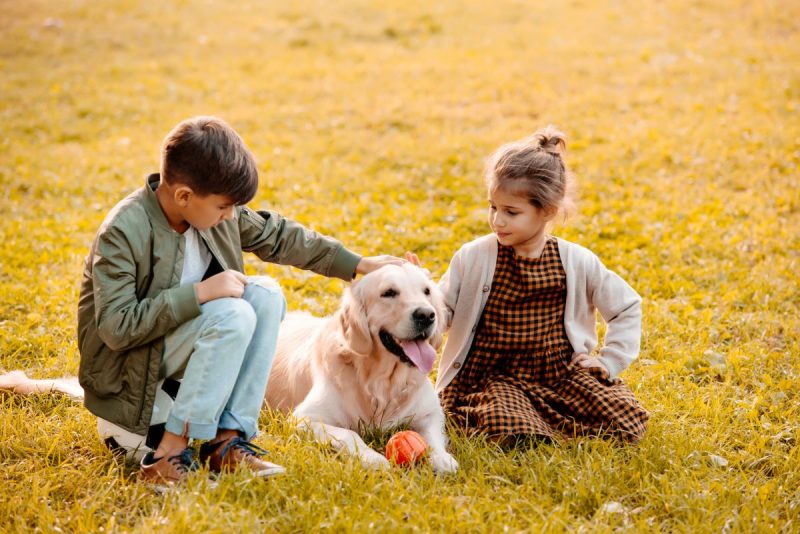

Leave a Comment